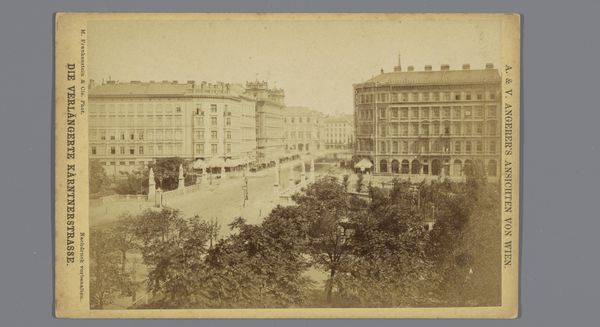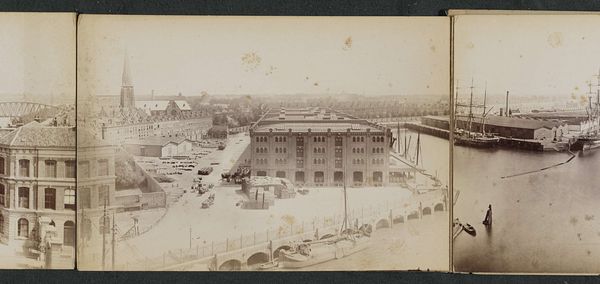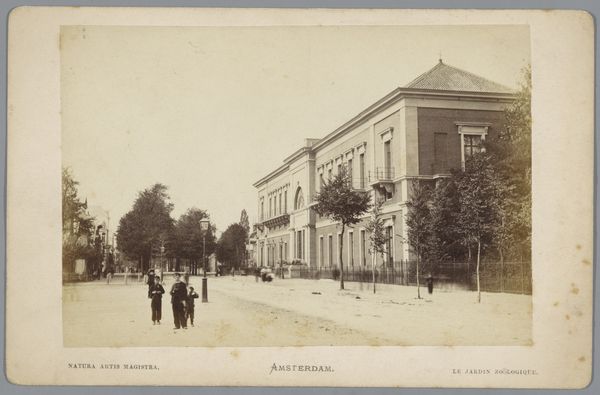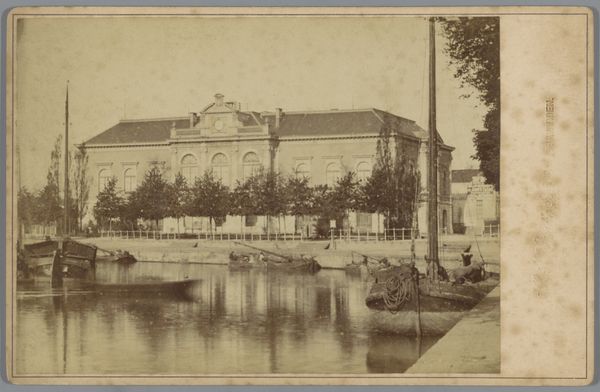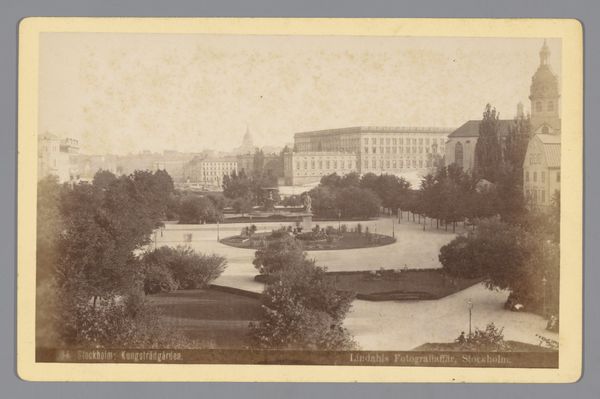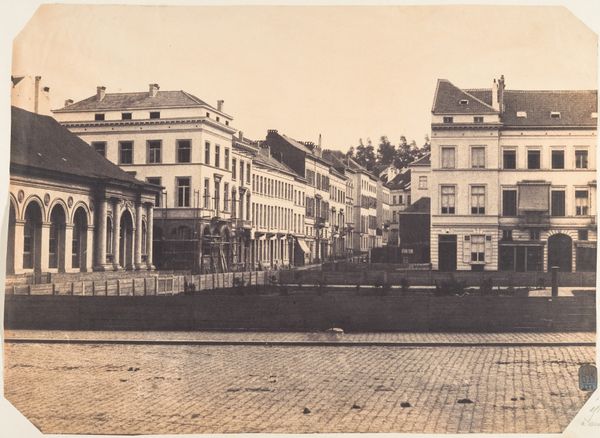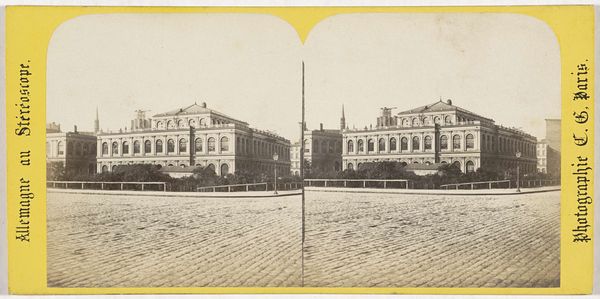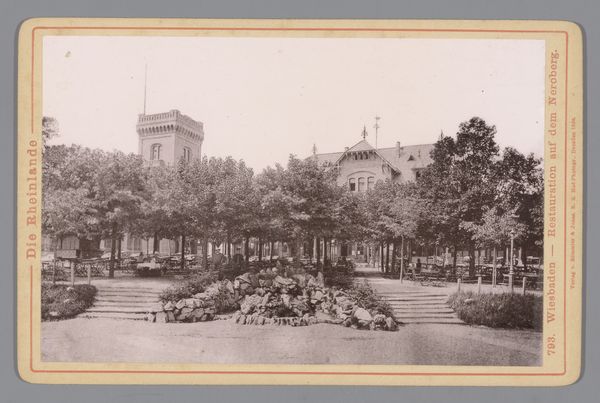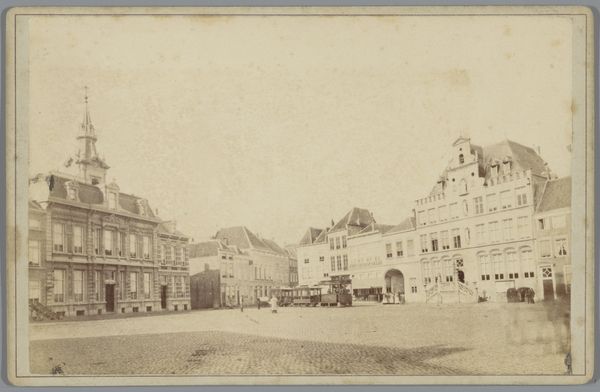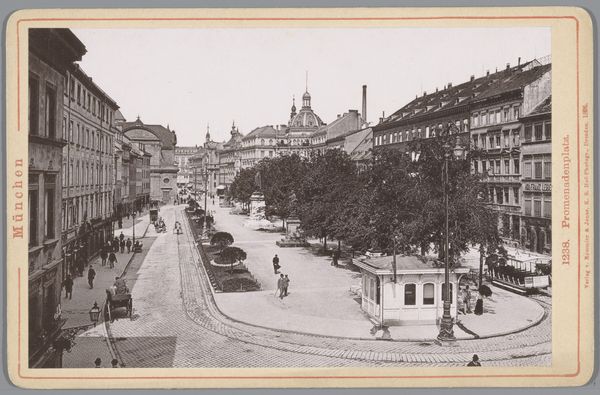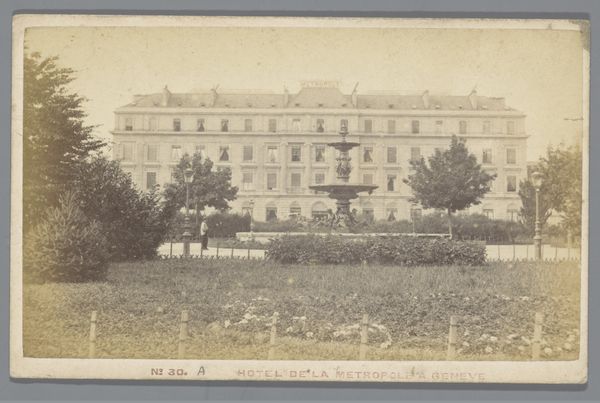
Dimensions: height 65 mm, width 106 mm
Copyright: Rijks Museum: Open Domain
Curator: Looking at this albumen print, I'm struck by its stillness, despite depicting a public space. There's a quiet grandeur, almost as if time itself has paused. Editor: We're viewing "Promenadeplatz in München," a cityscape captured sometime between 1855 and 1885. It offers us a peek into Munich's urban life during that period. Curator: The statues punctuating the avenue evoke classical ideals, yet the everyday bustle feels very much of its time. There’s a compelling contrast there. Editor: Precisely. Notice the careful placement of monuments dedicated to significant figures. These were strategically placed to promote civic identity and cultural values, very deliberate assertions of power and memory within the urban fabric. The promenade itself acts as a stage. Curator: And what figures! One seems like some important poet or philosopher – likely to represent intellectual achievement, guiding the public spirit. I am guessing it has something to do with the humanist ideals so powerful then. Editor: Likely. Consider the role of the burgeoning middle class at this time, too. Photography like this catered to their aspirations and idealized visions of their city, of a prosperous, orderly society presented through this particular, aesthetic lens. Curator: It's the soft, almost dreamlike quality of the albumen print that elevates it beyond a mere document. It imbues the scene with a certain romanticism, I would argue. The monochromatic tones add to that sense of nostalgia, looking back at this world as it existed then. Editor: Indeed, albumen prints served as tools of both record and idealization. This intersection is precisely where the photograph's power lies; it invites contemplation on the narratives we construct around place, memory, and progress. Curator: Examining "Promenadeplatz in München," has me pondering how much our perception of public space is shaped by those sanctioned images and imposed memories. It is quite striking when considered that way. Editor: I’m left wondering how people interact with these enduring symbols now, in our era, so very different. What remains when these figures from the past cease to be recognizable faces? Food for thought!
Comments
No comments
Be the first to comment and join the conversation on the ultimate creative platform.
